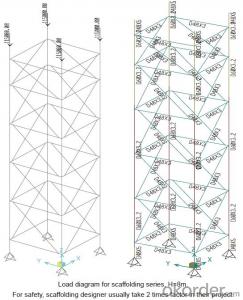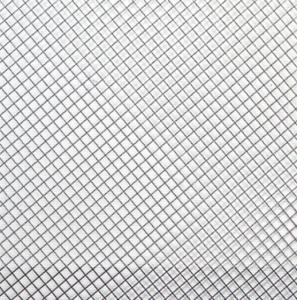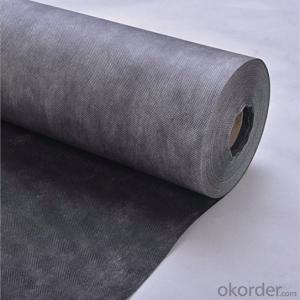Ring-lock Scaffolding Accessories for Formwork and Scaffolding system
- Loading Port:
- Tianjin
- Payment Terms:
- TT OR LC
- Min Order Qty:
- 50 m²
- Supply Capability:
- 1000 m²/month
OKorder Service Pledge
Quality Product, Order Online Tracking, Timely Delivery
OKorder Financial Service
Credit Rating, Credit Services, Credit Purchasing
You Might Also Like
Ring-lock Scaffolding
A support system for construction, ownsadvantages of both cup-lock scaffolding andshoring tower.
It is in the development direction of new typescaffolding.
It is widely used in buildings, bridges, tunnels etc..
Characteristics:
◆ Easy to storage and transportation
◆ High degree of standardization
◆ Easy and quick erection
◆ Excellent stability and bearing capacity
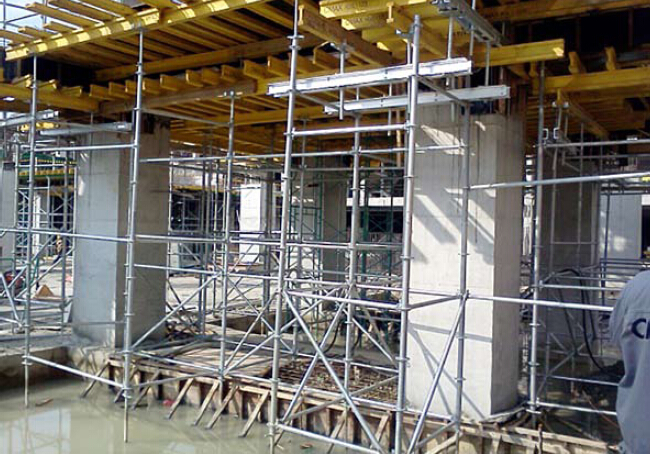
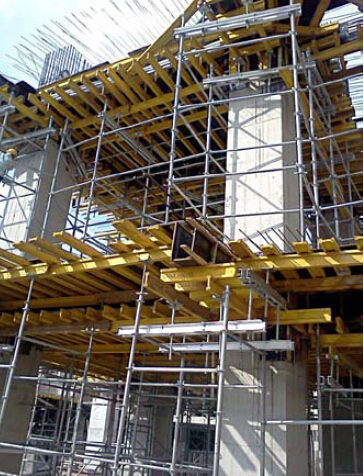
- Q:How does steel formwork affect the overall construction site logistics?
- The overall construction site logistics can be significantly impacted by steel formwork. Firstly, the durability and strength of steel formwork allow for multiple reuses, reducing the need for constant replacement and disposal of materials. This results in reduced waste generation and improved site cleanliness. Moreover, steel formwork is lightweight and easily adjustable, making it easier to handle and transport around the construction site. This improves material handling efficiency and reduces the time required for installation and removal of formwork. Additionally, the lightweight nature of steel formwork reduces the load on the structure, leading to reduced transportation costs and improved safety during construction. Furthermore, steel formwork offers high dimensional accuracy, ensuring precise and consistent shapes for concrete elements. This helps streamline the construction process by reducing the need for excessive adjustments and rework, resulting in improved time management and increased productivity. Additionally, steel formwork provides a smooth and even finish to concrete structures, eliminating the need for additional surface treatments and reducing the time and effort required for finishing work. In summary, steel formwork contributes to improved construction site logistics by reducing waste, enhancing material handling efficiency, improving construction speed, and ensuring high-quality finishes. Its durability, lightweight nature, and dimensional accuracy make it a valuable asset in optimizing construction processes and achieving project timelines more effectively.
- Q:How does steel formwork handle different concrete pouring techniques?
- Steel formwork is highly versatile and can handle various concrete pouring techniques with ease. Its sturdy structure and durability enable it to withstand the pressure and weight of different concrete pouring methods, such as pouring by hand, pouring with a pump, or pouring using a crane. The steel formwork provides excellent support and stability, ensuring that the concrete maintains its desired shape and structure during the pouring process. Additionally, steel formwork can be easily adjusted and customized to accommodate different pouring techniques, making it a preferred choice for construction projects that require flexibility and adaptability.
- Q:How does steel formwork affect the overall material wastage in construction?
- Steel formwork can significantly reduce material wastage in construction. Unlike traditional timber formwork, steel formwork is reusable and durable, which means it can be used multiple times for different construction projects. This reduces the need for constantly buying and disposing of new formwork materials, resulting in less overall material wastage. Additionally, steel formwork provides better dimensional accuracy and stability, minimizing errors and the need for rework, further reducing material wastage.
- Q:What are the common challenges faced during steel formwork transportation?
- There are a number of difficulties that can arise during the transportation of steel formwork. One major challenge is the sheer weight and size of the formwork. It can be heavy and bulky, making it tough to handle and transport. Special equipment and vehicles may be necessary to safely move the formwork to its intended destination. Another challenge is the risk of damage or distortion during transportation. It is crucial to transport the steel formwork in a way that prevents any bending, twisting, or scratching. If the formwork is mishandled or not properly secured, it can be damaged, which could impact its performance and durability. The logistics of transportation can also pose challenges. Coordinating the delivery of steel formwork to construction sites can be complex, particularly if multiple projects are happening simultaneously. Careful planning and coordination are required to ensure that the formwork arrives on time and in the right quantities. Furthermore, the terrain and road conditions can create challenges during transportation. If the construction site is located in a remote or hard-to-reach area, transporting the steel formwork can be even more difficult. Poor road conditions, narrow access roads, or steep inclines may necessitate additional measures to ensure safe transportation. Finally, safety is of the utmost importance during the transportation of steel formwork. The weight and size of the formwork can pose risks to the personnel involved in loading, unloading, and securing it. It is essential to follow proper safety protocols and provide adequate training to minimize the risk of accidents or injuries. Overall, the challenges commonly encountered during steel formwork transportation include the weight and size of the formwork, the potential for damage or distortion, the logistics of delivery, the terrain and road conditions, and safety considerations. By effectively addressing these challenges, the transportation process can be carried out smoothly, ensuring that the steel formwork is delivered to construction sites in a timely and safe manner.
- Q:How does steel formwork prevent concrete segregation during pouring?
- To prevent concrete segregation during pouring, steel formwork offers a rigid and stable structure that securely holds the concrete in place. The steel panels are engineered to possess strength and durability, guaranteeing that they maintain their shape and do not bend or flex under the weight and pressure of the concrete. This effectively prevents the concrete from separating and segregating, an issue that arises when the formwork lacks sturdiness. Moreover, steel formwork is designed with tight connections and joints, effectively reducing the chances of any leakage. This is crucial because if water from the concrete mixture leaks out, it can lead to the separation and settling of aggregates, causing segregation. Therefore, the tight connections and joints contribute to maintaining the desired shape and dimensions of the concrete structure. Additionally, steel formwork is often treated or coated to prevent any chemical reactions between the concrete and the steel. This is of utmost importance as such reactions can result in concrete segregation and gradual weakening over time. Through the provision of a strong and stable framework, prevention of leakage, and avoidance of chemical reactions, steel formwork ensures that the concrete mixture remains homogeneous and properly integrated, effectively preventing segregation during pouring.
- Q:Can steel formwork be used for structures with high chemical resistance requirements?
- No, steel formwork is not suitable for structures with high chemical resistance requirements. Steel is prone to corrosion and is not resistant to many harsh chemicals. When exposed to chemicals, steel formwork can deteriorate and lose its structural integrity, compromising the stability and safety of the structure. In such cases, alternative materials like chemically resistant plastics or composites should be considered to ensure the longevity and durability of the structure in environments with high chemical exposure.
- Q:Can steel formwork be used for complex geometric designs?
- Yes, steel formwork can be used for complex geometric designs. Steel is a versatile material that can be easily shaped and molded into various intricate forms, making it suitable for complex geometric designs. Steel formwork allows for precise and accurate construction, ensuring that the desired shape and dimensions of the design are achieved. Additionally, the strength and durability of steel make it suitable for supporting the weight and pressure exerted during the concrete pouring process. This makes steel formwork a reliable choice for creating complex geometric designs in construction projects.
- Q:Can steel formwork be used in areas with limited access or space constraints?
- Yes, steel formwork can be used in areas with limited access or space constraints. Steel formwork is known for its versatility and adaptability, making it suitable for use in various construction projects, including those with restricted access or limited space. Steel formwork can be easily customized and fabricated to fit specific dimensions and shapes required for a particular project. This flexibility allows construction teams to efficiently work in areas with limited access or space constraints, such as narrow alleys, confined construction sites, or high-rise buildings. Additionally, steel formwork offers high strength and durability, which is crucial when working in challenging environments. It can withstand heavy loads and provide stability to the concrete structure, ensuring safety and structural integrity. Moreover, steel formwork can be quickly assembled and disassembled, enabling easy transportation and installation in areas with restricted access. Its lightweight nature allows for ease of handling and maneuverability, minimizing the requirement for heavy machinery or equipment. In conclusion, steel formwork is a suitable choice for areas with limited access or space constraints due to its adaptability, strength, durability, and ease of assembly. It allows construction teams to efficiently work in challenging environments, ensuring the successful completion of construction projects.
- Q:Can steel formwork be used for concrete walls and columns?
- Concrete walls and columns can indeed utilize steel formwork. This formwork option is widely favored for such purposes due to its enduring nature, robustness, and capacity for reuse. It enables the precise formation and alignment of concrete structures, yielding a superior end result. Steel formwork can withstand the pressure exerted by wet concrete and offer the crucial support needed during the curing stage. Furthermore, it resists warping, shrinking, and swelling, ensuring reliable outcomes across multiple pours. Nevertheless, the cost of steel formwork warrants consideration, as it typically exceeds that of alternative formwork types.
- Q:Is steel formwork suitable for projects with tight deadlines?
- Indeed, projects with tight deadlines can benefit from the use of steel formwork. Its exceptional durability and strength enable it to withstand high pressure and repetitive use. Consequently, it can be reused multiple times without compromising its structural integrity, resulting in faster construction. Furthermore, the assembly and disassembly of steel formwork are effortless, facilitating quick and efficient installation and removal. Its adaptability and versatility make it a suitable choice for construction projects of any scale or complexity. Consequently, incorporating steel formwork into projects with tight deadlines can accelerate the construction process and ensure timely completion.
1. Manufacturer Overview |
|
|---|---|
| Location | |
| Year Established | |
| Annual Output Value | |
| Main Markets | |
| Company Certifications | |
2. Manufacturer Certificates |
|
|---|---|
| a) Certification Name | |
| Range | |
| Reference | |
| Validity Period | |
3. Manufacturer Capability |
|
|---|---|
| a)Trade Capacity | |
| Nearest Port | |
| Export Percentage | |
| No.of Employees in Trade Department | |
| Language Spoken: | |
| b)Factory Information | |
| Factory Size: | |
| No. of Production Lines | |
| Contract Manufacturing | |
| Product Price Range | |
Send your message to us
Ring-lock Scaffolding Accessories for Formwork and Scaffolding system
- Loading Port:
- Tianjin
- Payment Terms:
- TT OR LC
- Min Order Qty:
- 50 m²
- Supply Capability:
- 1000 m²/month
OKorder Service Pledge
Quality Product, Order Online Tracking, Timely Delivery
OKorder Financial Service
Credit Rating, Credit Services, Credit Purchasing
Similar products
New products
Hot products
Hot Searches
Related keywords
